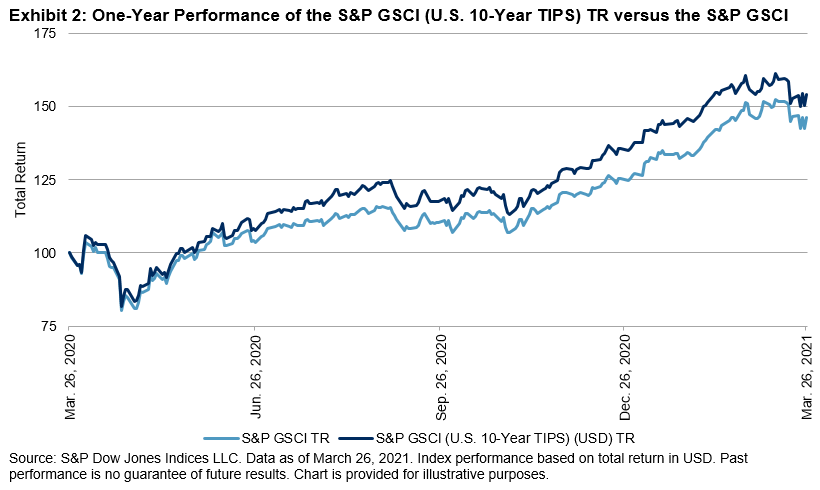The S&P GSCI will commemorate its 30th anniversary in April 2021 following one of the better quarterly performances in its history. Despite giving up some of its recent gains in March, the S&P GSCI rose 13.5% in Q1 2021. A robust, if uneven, post-pandemic recovery in economic activity, ongoing supply dislocations, and the global push toward decarbonization have combined to point a spotlight on the commodities market.
Across the petroleum complex, March was a month of price consolidation, but the S&P GSCI Petroleum still managed to end the quarter up 22.6%. In some regions, demand concerns have re-emerged, and market participants will be eagerly awaiting the OPEC+ decision on April 1 regarding production. OPEC+ has reduced output by approximately 7 million barrels per day (bpd) to support prices and reduce the oversupply seen since the start of the COVID-19 pandemic. In addition, Saudi Arabia has made an extra 1 million bpd voluntary cut.
Among the industrial metals, nickel cooled off in March after a hot start to the year. The S&P GSCI Nickel dropped 13.6% for the month, pulling YTD performance into slightly negative territory for the metal—mostly associated with electric vehicles. Most of the weakness came at the beginning of the month, when the world’s top stainless steel producer in China announced a deal in Indonesia, easing supply shortage concerns for the metal. While most industrial-focused metals were lackluster in March, despite positive economic data still showing signs that the global economic recovery continued, the S&P GSC Industrial Metals gained 9.0% YTD.
The first quarter of 2021 was one the S&P GSCI Precious Metals would rather forget, falling 9.5%. The S&P GSCI Precious Metals dropped again in March, following renewed strength in the U.S. dollar and continued market appetite for risk assets. One positive in the space came from the S&P GSCI Palladium, which rose 13.2% in March after a dismal start to the year.
Corn ended the quarter at the highest level since June 2013; the S&P GSCI Corn was up 3.1% for the month and 16.9% for the quarter. On the final day of the quarter, the U. S. Department of Agriculture (USDA) released its annual survey of planting intentions, which suggested U.S. farmers would plant significantly fewer corn and soybeans acres than expected. Considering the already strong demand from domestic and international processors, the smaller-than-expected planting of those two main cash crops in the U.S. has heightened concerns regarding global food and animal feed supplies. In the softs market, the S&P GSCI Sugar gave up all of its YTD gains in March, falling 10.2% over the month. Weak demand, particularly in Europe, and a stronger-than-expected finish to the harvest in Thailand have reportedly eased concern about nearby sugar supply tightness.
Once again, the livestock sector was dominated by an ongoing rally in lean hogs; the S&P GSCI Lean Hogs rose 10.4% in March and 27.4% for the quarter. Lean hog prices drew support from the USDA’s March 25, 2021, quarterly hog report, which showed a smaller-than-expected U.S. hog herd.
The posts on this blog are opinions, not advice. Please read our Disclaimers.











